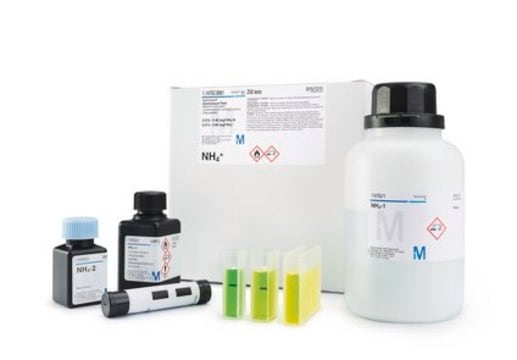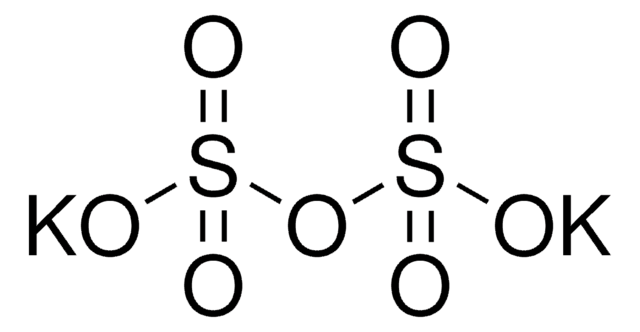55777
Potassium disulfite
analytical standard
Synonym(s):
E224, Potassium metabisulfite, Potassium pyrosulfite
About This Item
Recommended Products
grade
analytical standard
Quality Level
Assay
≥98% (RT)
shelf life
limited shelf life, expiry date on the label
technique(s)
HPLC: suitable
gas chromatography (GC): suitable
solubility
H2O: 200 mg/mL, clear to very slightly hazy, colorless
application(s)
cleaning products
cosmetics
food and beverages
personal care
format
neat
SMILES string
[K+].[K+].[O-]S(=O)S([O-])(=O)=O
InChI
1S/2K.H2O5S2/c;;1-6(2)7(3,4)5/h;;(H,1,2)(H,3,4,5)/q2*+1;/p-2
InChI key
RWPGFSMJFRPDDP-UHFFFAOYSA-L
Looking for similar products? Visit Product Comparison Guide
Related Categories
General description
Application
Signal Word
Danger
Hazard Statements
Precautionary Statements
Hazard Classifications
Eye Dam. 1 - STOT SE 3
Target Organs
Respiratory system
Supplementary Hazards
Storage Class Code
11 - Combustible Solids
WGK
WGK 1
Choose from one of the most recent versions:
Already Own This Product?
Find documentation for the products that you have recently purchased in the Document Library.
Our team of scientists has experience in all areas of research including Life Science, Material Science, Chemical Synthesis, Chromatography, Analytical and many others.
Contact Technical Service







